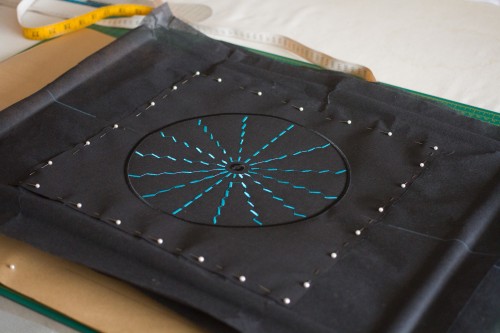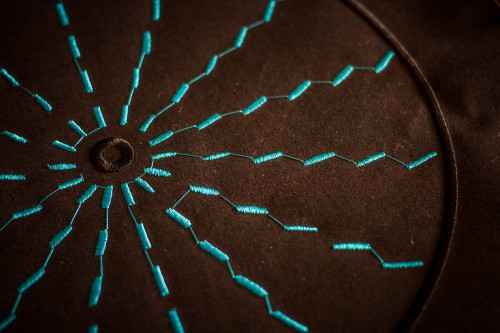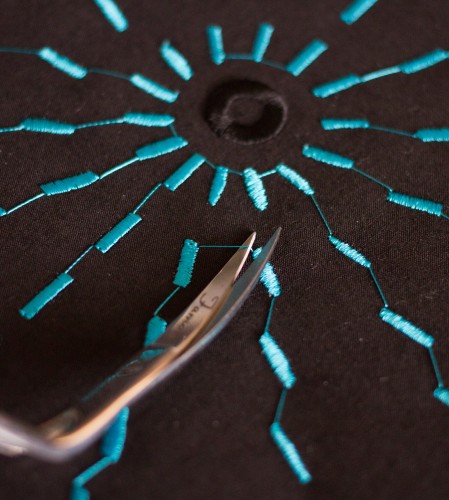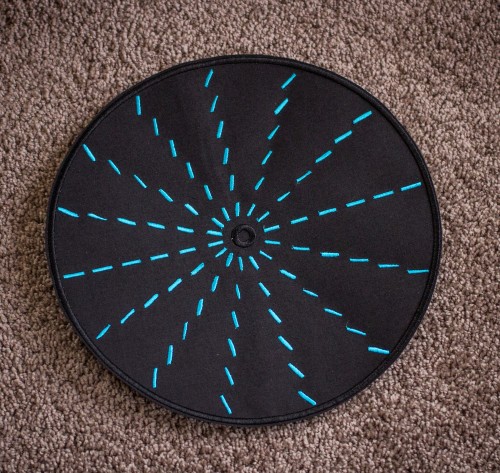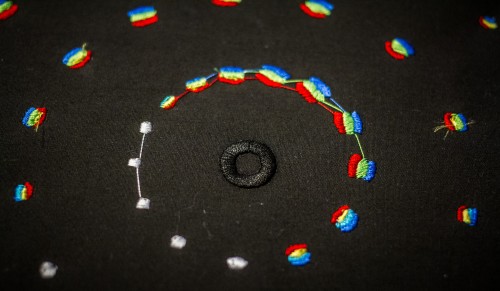Result of embroidering the code-generated zoetrope animations
I recently created two animated sequences using Processing. Of all the other embroidered animations I have made, these two are the first to be created entirely using code.
Today I got to see what they look like when embroidered.
I had high expectations for this disc, primarily because it is a really simple sequence and I would be surprised if there were any significant problems when embroidering it. Nevertheless, it met my expectations, and is a very simple and elegant design.
This was the first design I made using Processing, so I held back and didn’t really make it too complex.
When creating the second design, however, I used additive colour to give the effect of splitting up white light into three components; red, green and blue. In addition to these colours, when the blue and green overlap, they add to produce a turquoise colour, and when red and green overlap they add to give yellow.
This seemingly simple design therefore required seven different coloured threads, and I wasn’t entirely sure how it would turn out.
Needless to say I am pretty happy with the result. It is excellent that the thread shines so well when exhibited on the stroboscopic turntables too because the colour becomes more vibrant and contributes to the concept of this particular design; exploring the relationship between light and colour.
